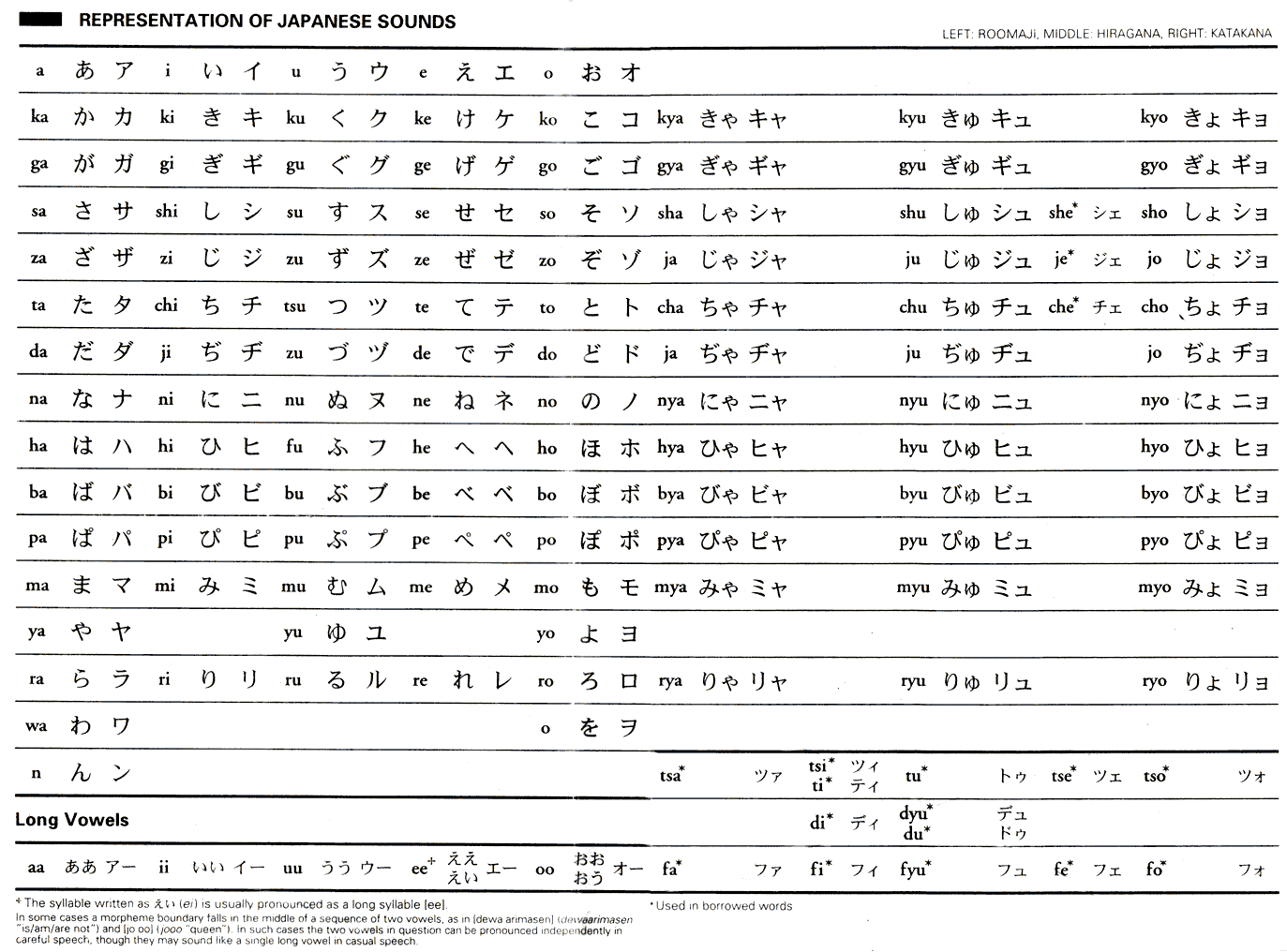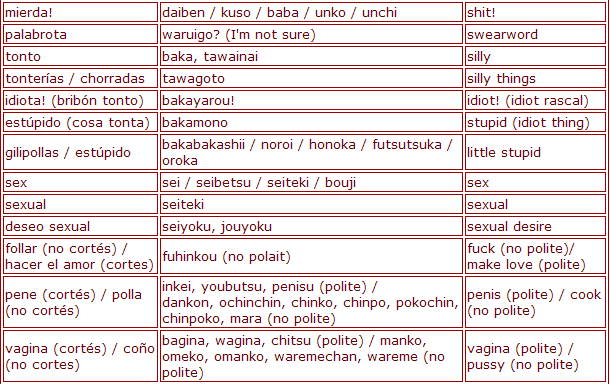JAPANESE ALPHABETS
For write any character in an english computer, the Japanese to use the program NJStar Communicator and writes the sound, for example: If you want to learn to read japones, it's recommendable to begin with the Hiragana alphabet and to forget the others. If in English we began to read with the vowels (aeiou) and basic consonants (mamemimomu, dadedidodu, etc), they use the same vowels although in different order (aiueo) and basic consonants (kakikukeko, sasisuseso, tatituteto, etc) |
In the next image you can see... Left: Roomaji (occidental), Middle: Hiragana, Right: Katakana


NICE JAPANESE SONGS
Frikkis of the Word, here you have the best japanese song, according to our opinion.
| Author | Song | Description |
| Ai Ootsuka | Sakuranbo | Ai ("love" in Japanese) is a sweet girl that sing the song "Sakurambo" that main "cherry", and the song is about the love and compare it with cherry because this fruit ever has two cherrys together (see video) and if you invert it, appear a heart. |
| Katori | Hoha | Katori is the most famous japanese pop singer, because he fight for the japanese woman rights. "Hoha" main "good morning". Sorry, other day I will finnish the translation, because today I'm too stoned xQ |
BAD WORDS IN JAPANESE

OTHERS LINKS
| Spanish-Japanese translator |
| Japanese characters to occidental conversor |
| More links and resources about Japan |
Best regards from Mars! Mata ne! =(^o^)=
Or you can visit other sections of our website:
- Learn the numbers in Japanese.
- Convert Hiragana, Katakana and Kanji into Roman letters.
- Learn Hiragana (basic writer japanese system).
- Learn Katakana (more advanced writer japanese system).
- To learn other alphabets visit other alphabets in Alfabetos Net main page.